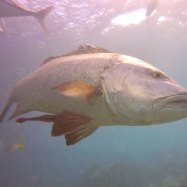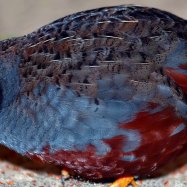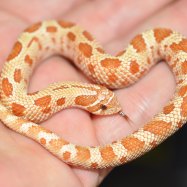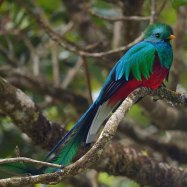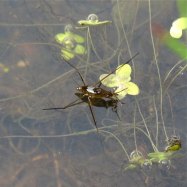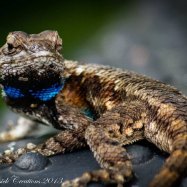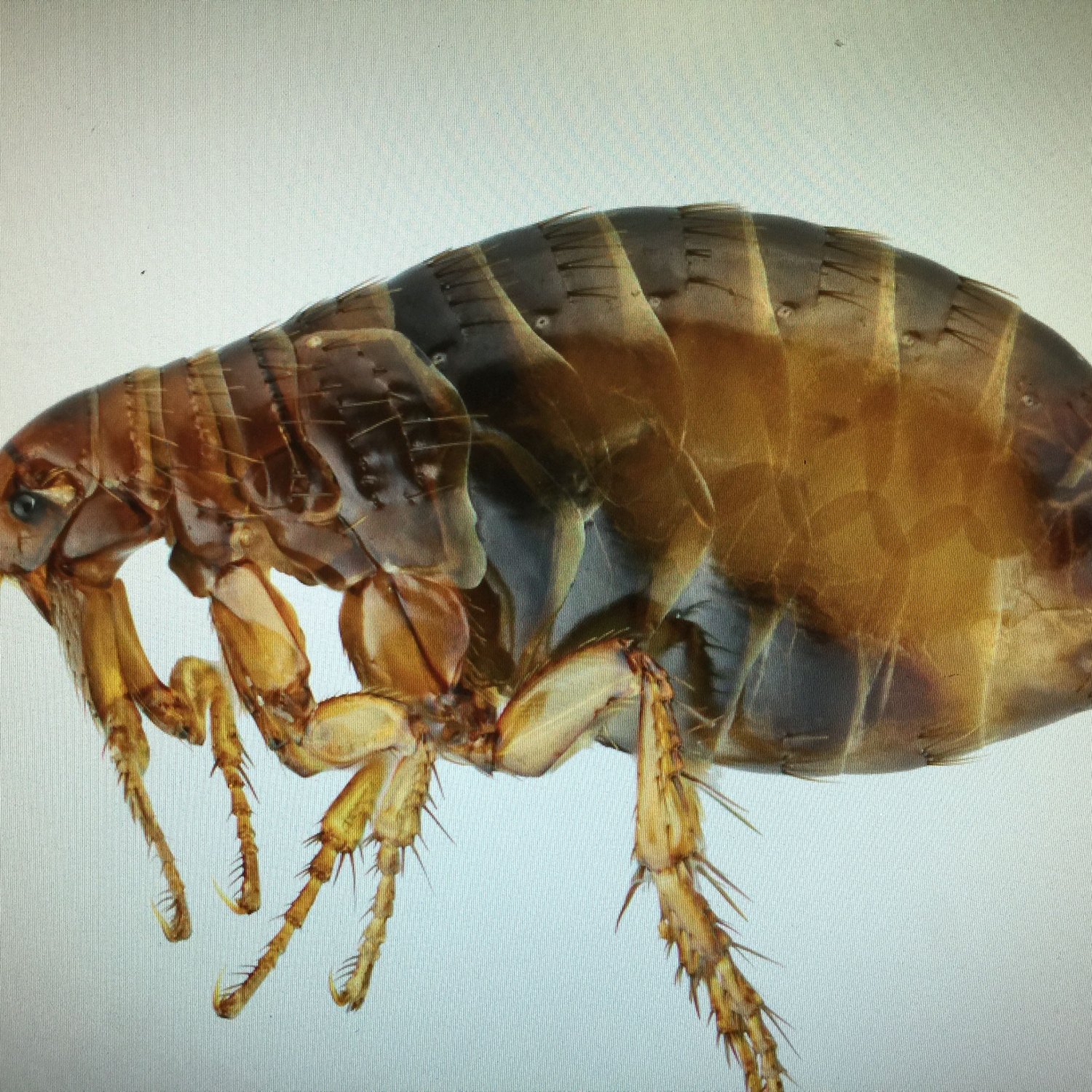
Flea
1 to 4 mm
Fleas are tiny parasitic insects, measuring only 1 to 4 mm in length. They can be found on their mammalian hosts, such as dogs and cats, feeding on their blood. Belonging to the family Pulicidae, fleas have a small and flat body that enables them to easily move through an animal's fur. Protect your pets from these pesky creatures with regular grooming and flea prevention methods. #animals #fleas #petcare
Animal Details Summary:
Common Name: Flea
Kingdom: Animalia
Habitat: Various habitats including grasslands, forests, and urban areas
The Mighty Flea: The Unstoppable Blood-Sucking Parasite
When you hear the word 'flea', the first image that comes to mind is probably that of a tiny pest hopping around on a dog's fur. While this might be a common association, there is much more to these tiny creatures than meets the eye. In fact, the flea has been around for millions of years and continues to thrive in various habitats around the world. From its scientific classification to its feeding habits, and even its size, there is so much to learn about this tiny but mighty insect Flea.Let's start with the basics. The flea, scientifically known as Siphonaptera, is a small but formidable insect in the animal kingdom. Belonging to the kingdom Animalia and phylum Arthropoda, fleas fall under the class Insecta and the order Siphonaptera. These tiny creatures are part of the Pulicidae family, and there are over 2,500 known species of fleas, with more being discovered each year.
Fleas are a common sight in various habitats, including grasslands, forests, and even urban areas. They are found worldwide, making them one of the most widespread insect groups. While their country of origin is unknown, they have been documented in scientific literature as far back as the Mesozoic era, which was more than 120 million years ago. It's safe to say that fleas have been around for a very long time and have perfected the art of survival.
But what exactly makes fleas such successful creatures? For one, they are parasites, feeding on the blood of their mammalian hosts Frengle. They are known to have around 100 different host species, including dogs, cats, rodents, and even humans. Their feeding method is quite fascinating – they have specially adapted mouthparts that enable them to pierce the skin of their hosts and suck blood. Not only that, but fleas also have an incredible ability to jump. They can jump up to 150 times their own body length, making them one of the best jumpers in the animal kingdom.
But their jumping abilities are not just for show. Fleas have evolved to survive on the bodies of their hosts without getting caught or squished. Their small and flat body shape, measuring only 1 to 4 mm in length, allows them to move seamlessly between their host's fur or feathers. This makes it easy for them to remain undetected and continue feeding without any interruptions.
However, fleas are not just a nuisance for pet owners or those unfortunate enough to get bitten by them. They have a significant impact on the ecosystem and even human health. In the past, fleas have been responsible for transmitting deadly diseases like the bubonic plague, also known as the Black Death, which wiped out a significant portion of the human population in the Middle Ages. Even today, they are known carriers of various diseases and can transmit them to humans and animals through their bites.
Aside from their reputation as parasites and disease carriers, fleas also have quite a diverse appearance. They vary in color depending on the species, with some being brown, black, or even reddish-brown. Some fleas even have striped or spotted bodies. This variation in coloration allows them to blend in with their surroundings and avoid detection.
So how exactly do fleas reproduce and survive? Let's take a closer look at their life cycle. Fleas go through four stages in their life cycle – egg, larva, pupa, and adult. Female fleas lay their eggs on their host, which then fall off onto the ground or the host's bedding. These eggs hatch into larvae, which feed on organic debris and flea feces. After going through a few molts, the larvae spin cocoons and enter the pupal stage. In this stage, the flea undergoes metamorphosis and emerges as an adult.
One of the most surprising and fascinating facts about fleas is their ability to survive extreme conditions. Their cocoons are resistant to harsh weather, pesticides, and even starvation. This means that fleas can survive for months and even years without feeding. This remarkable ability to survive under challenging conditions makes it difficult to eradicate them once they infest an area.
To protect themselves, fleas also have another defense mechanism – their saliva. When they bite their host, they inject saliva that contains an anticoagulant, making it easier for them to suck blood. This saliva can trigger an allergic reaction in some animals, leading to itching, hair loss, and even severe skin infections.
So how can you prevent and control a flea infestation? As a pet owner, it's essential to regularly check and groom your pets for fleas. Keep their bedding and living area clean and vacuum regularly. Fleas can also infest your home, so it's crucial to treat your home and yard if necessary. If you notice a severe infestation or your pet is experiencing adverse reactions, it's best to consult a veterinarian for proper treatment.
In conclusion, the flea may be a tiny insect, but it is undoubtedly a force to be reckoned with. From its incredible jumping abilities to its survival tactics, this small but mighty creature continues to thrive in various habitats worldwide. While they may not be everyone's favorite insect, there's no denying that fleas have an intriguing and impressive way of adapting and surviving. So the next time you spot a flea on your pet or in your home, take a moment to appreciate the mighty flea for all its remarkable features and abilities.

Flea
Animal Details Flea - Scientific Name: Siphonaptera
- Category: Animals F
- Scientific Name: Siphonaptera
- Common Name: Flea
- Kingdom: Animalia
- Phylum: Arthropoda
- Class: Insecta
- Order: Siphonaptera
- Family: Pulicidae
- Habitat: Various habitats including grasslands, forests, and urban areas
- Feeding Method: Blood-sucking parasites
- Geographical Distribution: Worldwide
- Country of Origin: Unknown
- Location: Found on mammalian hosts
- Animal Coloration: Varies depending on species
- Body Shape: Small and flat
- Length: 1 to 4 mm
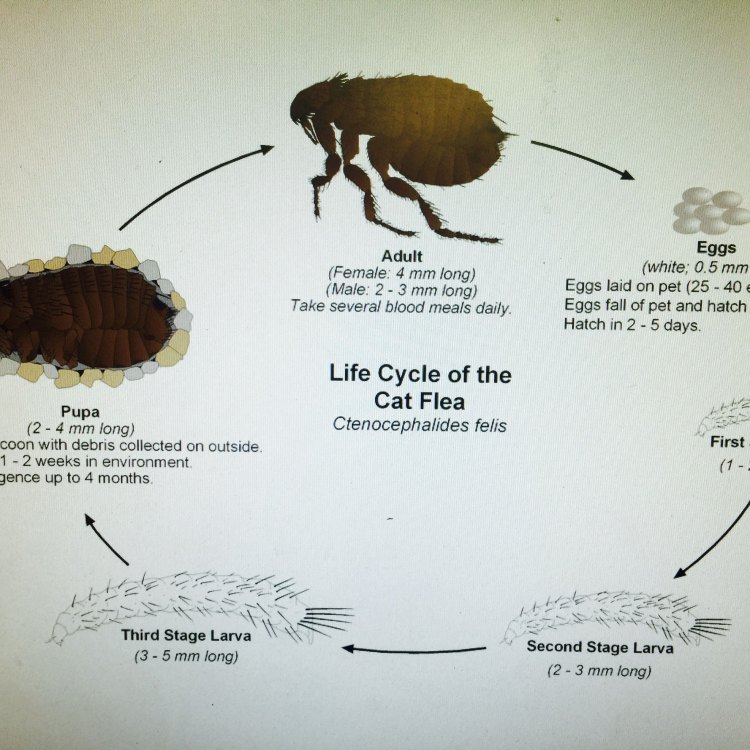
Flea
- Adult Size: 1 to 4 mm
- Average Lifespan: 2 to 3 months
- Reproduction: Reproduce rapidly
- Reproductive Behavior: Mating occurs on the host
- Sound or Call: No specific sound
- Migration Pattern: Do not migrate
- Social Groups: Solitary
- Behavior: Agile and capable of jumping long distances
- Threats: Can transmit diseases to humans and animals
- Conservation Status: Not applicable
- Impact on Ecosystem: Can affect the population dynamics of host species
- Human Use: Used in scientific research and as pets/hobby
- Distinctive Features: Strong legs for jumping, laterally compressed body
- Interesting Facts: Fleas are excellent jumpers, capable of jumping up to 150 times their own body length
- Predator: Various predators including insects, birds, and mammals
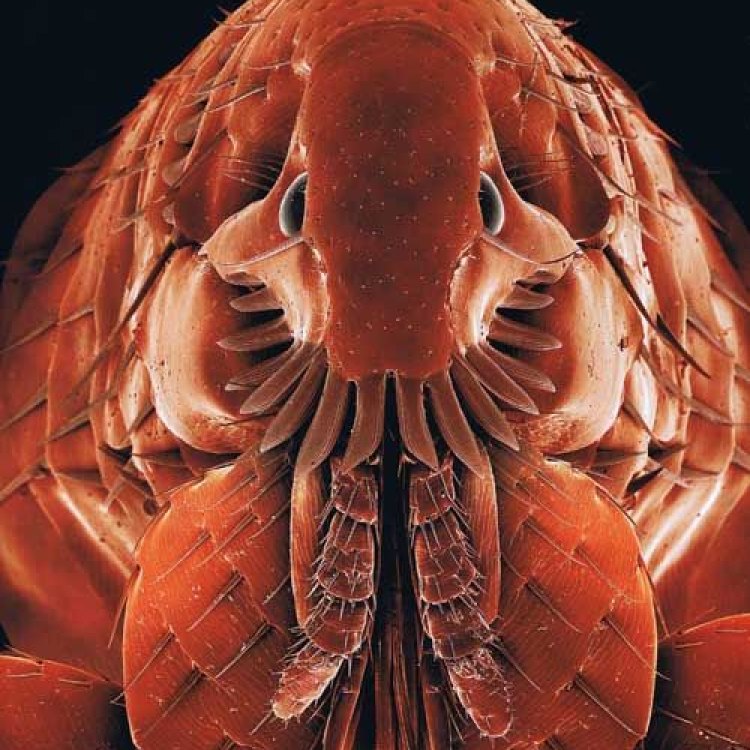
Siphonaptera
The Tiny but Mighty Flea: Exploring the Unique Features of this Agile Insect
From its diminutive size to its incredible jumping abilities, the flea may seem like a relatively unassuming insect. However, these small but mighty creatures possess a number of unique features that make them an invaluable addition to our ecosystem.In this article, we will explore the fascinating world of fleas, from their size and lifespan to their behavior and impact on the environment. We will delve into their distinct characteristics and discover some interesting facts about these agile insects PeaceOfAnimals.Com. So, let's dive in and learn more about the tiny but mighty flea.
Size and Lifespan
Fleas are incredibly small insects, with the average adult flea measuring only 1 to 4 millimeters in length. Despite their tiny size, they are capable of inflicting great discomfort on their hosts, including humans and animals.These insects have a relatively short lifespan, typically living for 2 to 3 months on average. However, this does not stop them from making a significant impact within their short time on Earth.
Reproduction and Behavior
One of the most remarkable features of fleas is their rapid reproduction rate. Female fleas can lay up to 25 eggs per day, which can quickly multiply and lead to infestations if left unchecked.Mating occurs on the host, where females will lay their eggs, and the larvae will develop and pupate. This unique reproductive behavior allows fleas to spread quickly and establish themselves in the homes of their hosts False Water Cobra.
Agility and Jumping Abilities
Fleas are renowned for their agility and jumping abilities. Despite their small size, they are capable of jumping long distances, up to 150 times their own body length. This remarkable feat is due to the structure of their hind legs, which are adapted for jumping.Fleas have strong legs that allow them to push off from a surface with incredible force. This enables them to reach hosts that may be located several feet away, making them incredibly efficient at spreading from one host to another.
Threats and Predators
While fleas may seem harmless, they can pose a significant threat to humans and animals. These insects are known to carry and transmit diseases, such as the bubonic plague and typhus, to their hosts. In addition, their bites can cause severe skin irritation and allergic reactions in some individuals.However, fleas are not invincible. They have a number of predators in the wild, including insects, birds, and mammals. In fact, ants are known to prey on flea larvae, and some species of wasps will lay their eggs on flea pupae, eventually killing them. Despite their small size, fleas must constantly be on the lookout for potential predators.
Impact on the Ecosystem
Fleas may be small, but their presence can have a significant impact on the ecosystem. As parasites, fleas rely on their hosts for survival and can affect the population dynamics of these hosts.In the wild, fleas can reduce the survival rates of various animal species, particularly young and weak individuals. They can also contribute to the spread of diseases among these populations. Additionally, fleas can disrupt the natural balance of ecosystems and even lead to the decline of certain species.
Human Use and Distinctive Features
Despite their negative impact, fleas do have some human uses. These insects are often used in scientific research, as their jumping abilities and unique biology make them excellent subjects for experimentation.In addition, some people keep fleas as pets or as a hobby. These individuals may collect flea specimens and observe their behavior, or they may even train fleas to perform tricks, which can be a difficult and time-consuming task due to their small size and agility.
Fleas also have some distinctive features that set them apart from other insects. For instance, their bodies are laterally compressed, giving them a flat appearance. This allows them to easily move through fur or feathers and cling to their hosts.
Interesting Facts
Here are some fun and interesting facts about fleas that you may not know:- Fleas are not only excellent jumpers, but they are also speedy. They can move at a rate of 100 times their body length in one second.
- Fleas have been around for millions of years, with fossils dating back to the Early Cretaceous period, over 100 million years ago.
- Fleas do not have wings, but they can still fly. Their jumping abilities allow them to reach great heights, similar to how a person might jump off a trampoline.
- The hind legs of fleas are so powerful that, relative to their size, they are stronger than the legs of an Olympic high jumper.
- While most people associate fleas with dogs and cats, these insects can also infest chickens, rabbits, and other animals.
The Flea: An Insect of Great Significance
Despite their small size, fleas are an incredible insect with many unique features and interesting behaviors. From their rapid reproduction to their amazing jumping abilities, they have a remarkable impact on our ecosystem and are of great significance in both scientific research and as pets.So, next time you come across a flea, take a moment to appreciate its incredible agility and tenacity. Who knows, you may even be tempted to keep one as a pet or attempt to train them to perform tricks. But be careful, as these tiny insects can cause major problems if left unchecked.
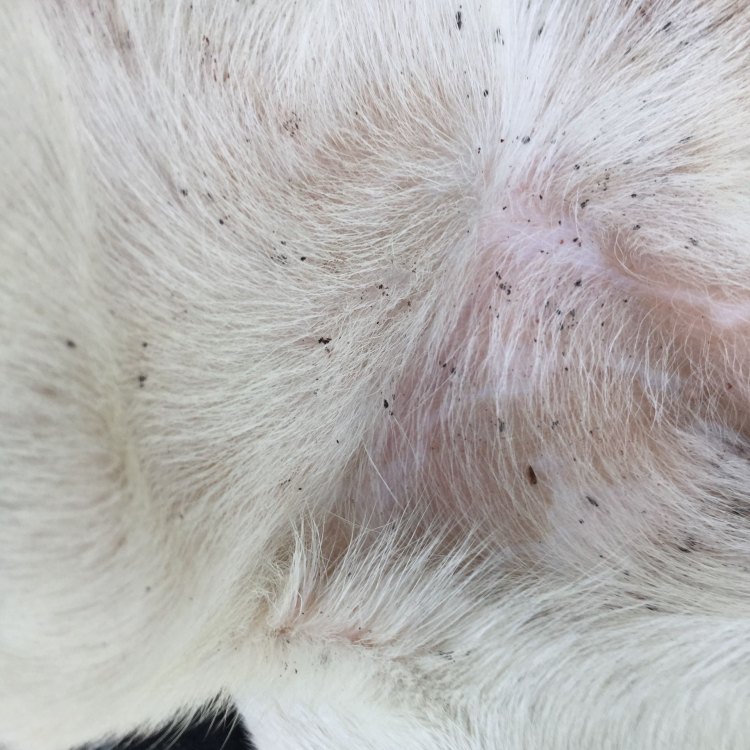
The Mighty Flea: The Unstoppable Blood-Sucking Parasite
Disclaimer: The content provided is for informational purposes only. We cannot guarantee the accuracy of the information on this page 100%. All information provided here may change without prior notice.


